Sweet fragrance is combined with visual beauty in gardens, creating a magnetic appeal created by fragrant purple flowers. From the majestic blooms of lavender to the delicate petals of lilacs, these enchanting blossoms infuse the air with their sweet and spicy fragrance.
Whether it’s the soothing scent of violets or the rich perfume of heliotropes, each bloom adds a unique touch to the garden landscape. Let’s explore the world of 27 fragrant purple flowers and their irresistible charm.
Different Types of Fragrant Purple Flowers
Yesterday, Today, and Tomorrow
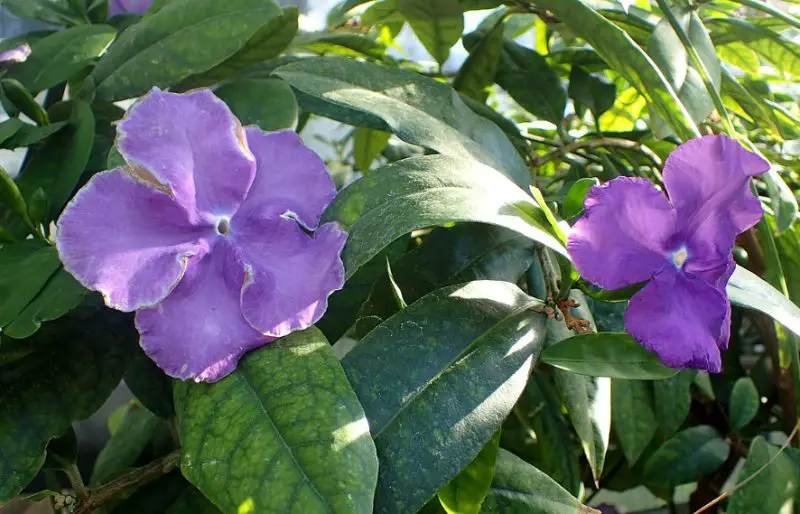
Commonly referred to by whimsical names like “yesterday, today, and tomorrow,” Brunfelsia pauciflora belongs to the nightshade family and hails from Brazil. This flowering shrub boasts leathery leaves and exquisite flowers that transition from purple to lavender to white.
While emitting a sweet, floral fragrance, caution is advised as all parts of the plant, especially the fruits and flowers, are toxic. The ‘Magnifica’ variety stands out for its particularly enchanting scent, adding allure to spring and summer gardens.
Freesia
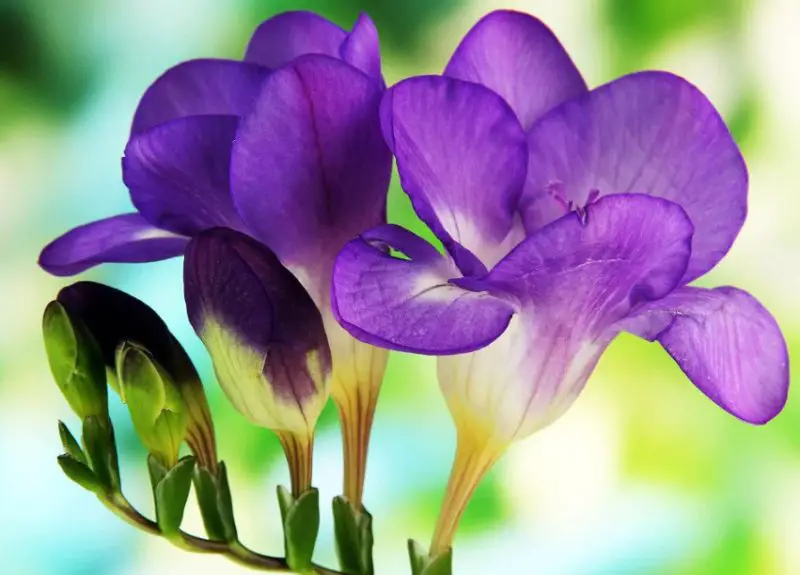
Belonging to the Iris family, Freesia is a genus of flowering plants originating from Southeastern Africa. Renowned for their fruity fragrance, Freesia flowers are sought-after ingredients in perfumes, lotions, and soaps. Their trumpet-shaped blooms, ranging from mauve to yellow, emit a powerful sweetness reminiscent of strawberries.
Adorning upright stalks with sparse foliage, these fragrant blossoms captivate during the spring season. Particularly aromatic varieties include single-flowered Freesia, antique Freesia alba, Matterhorn, and Tecolote white.
Night-Scented Stock
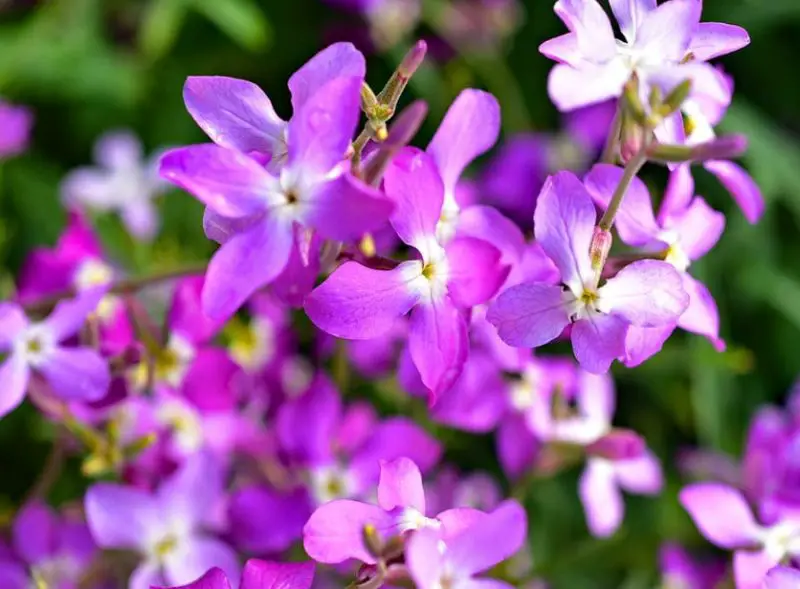
Night-scented stock, also known as Matthiola longipetala, earns its name from its stunning evening blooms that entice nocturnal pollinators like moths. With petite flowers boasting four slender petals, it exhibits a gradient from white to deep purple.
Despite its wilted appearance in daytime heat, it rejuvenates at dusk, releasing a sweet, spicy fragrance reminiscent of cinnamon and clove. Blooming from spring to fall, this highly branched plant adds allure to gardens with its aromatic presence.
Lilac
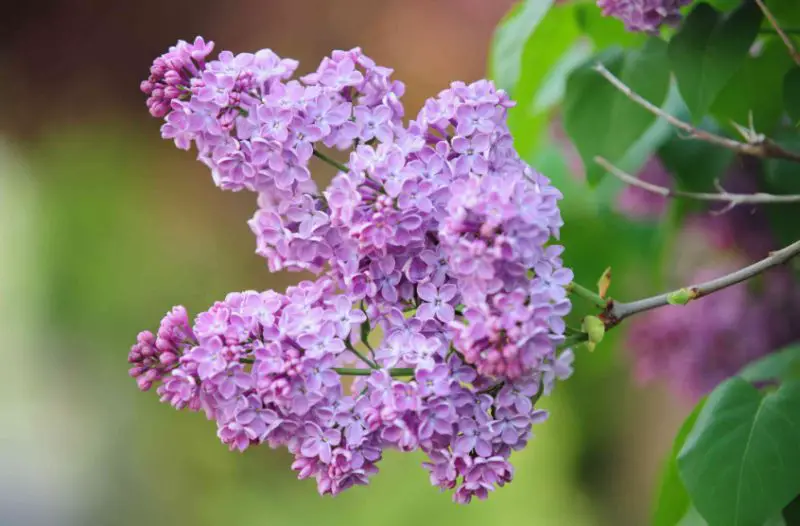
Belonging to the Syringa genus, lilacs encompass 12 species of small flowering trees. Their woody stems support heart-shaped or lanceolate leaves, with panicles of tiny tubular flowers resembling grape bunches. While light bluish-purple hues dominate, lilacs also bloom in white, pink, and deep burgundy shades.
Fragrance varies among varieties, with some emitting richly floral scents infused with hints of vanilla, rose, and occasionally cinnamon or clove. Miss Kim, President Lincoln, Pekin tree lilac, and Japanese tree lilac are among the most fragrant varieties, perfuming neighborhoods in spring breezes.
Butterfly Bush
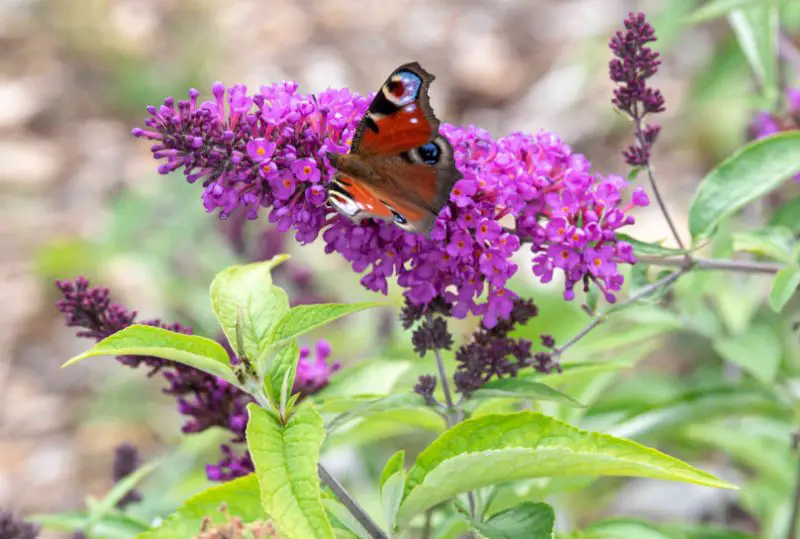
Originating from Central China and Japan, the butterfly bush, or Buddleja davidii, thrives in hardiness zones 5 through 9. Its deciduous nature offers year-round appeal, with striking foliage complementing its prized conical flower panicles, which reach up to 8 inches long.
True to its name, this bush attracts butterflies and other pollinators, enriching your garden ecosystem. Emitting a sweet, honey-like fragrance, varieties like safe bush and winter flowering lilac enhance the ambiance of spring and summer.
Phlox
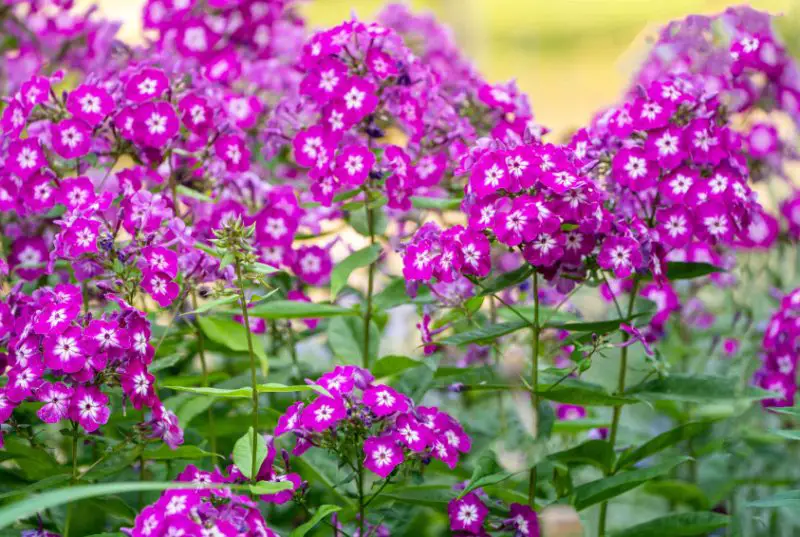
The Phlox genus, comprising 67 species of annual and perennial plants, primarily thrives in North America, save for one Siberian species. Flourishing in diverse habitats like woodlands, prairies, and alpine tundra, phlox has brightly colored flower clusters. Its name, derived from the Greek word for flame, alludes to its vibrant blooms.
Emitting a sweet fragrance with hints of vanilla and clove, Phlox varieties like ‘Cinderella,’ ‘Fairy’s Petticoat,’ and ‘Ending Blue’ add charm to gardens throughout spring, summer, or fall.
Wisteria
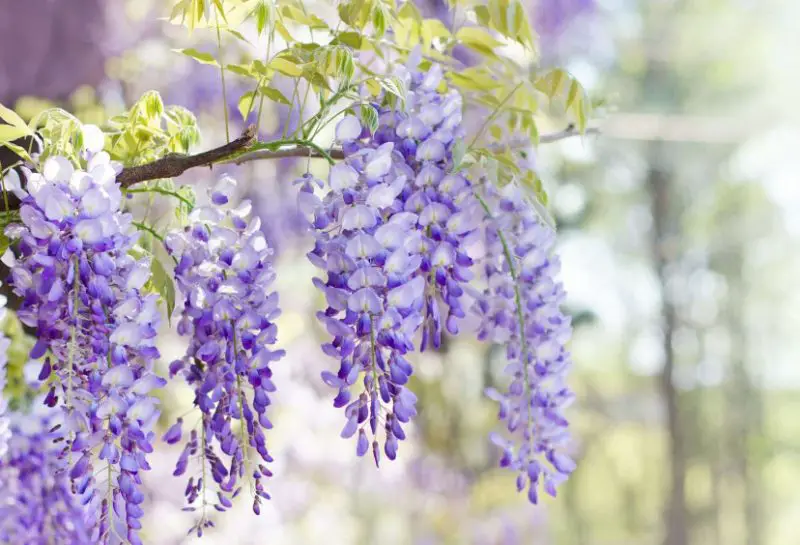
The Wisteria genus comprises ten species of woody, vining plants known for their enchanting beauty. These plants can adopt tree-like forms, with vines intertwining to create a trunk. Their voluminous, pendulous cones of flowers, in hues of purple, pink, blue, and white, form a beautiful canopy.
However, all parts of Wisteria plants are toxic if ingested. Emitting a musky, sweet fragrance, varieties like Wisteria sinensis and ‘Shiro Kapitan’ and ‘Murasaki Kapitan’ of Wisteria brachybotrys are particularly aromatic during spring and summer.
Sweet Pea
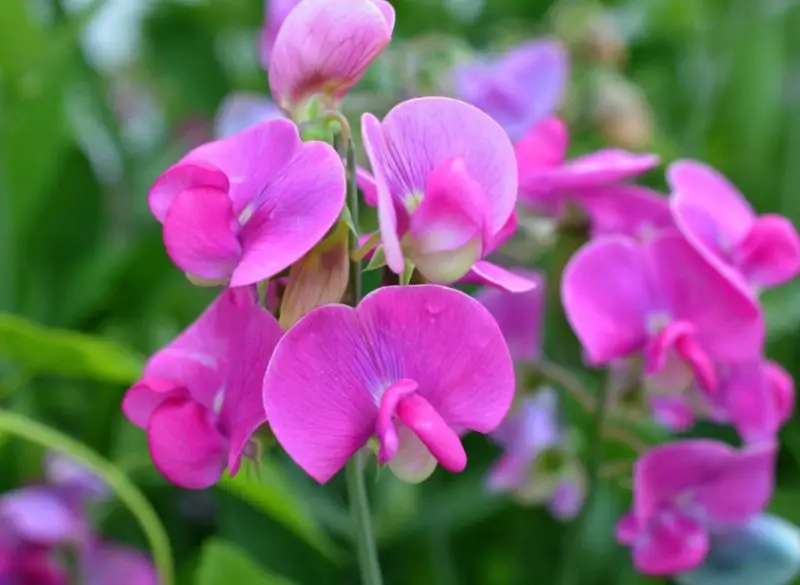
Hailing from Southern Italy, Sicily, and the Aegean Sea islands, Lathyrus odoratus, commonly known as sweet pea, boasts a delightful fragrance, as its name suggests. Adorning gardens with delicate blossoms ranging from white to fuchsia, cultivars exhibit diverse hues, while wild varieties bloom primarily in purple.
Their sweet, spicy, citrusy, and floral scent infuses the air, enriching spring and summer landscapes. Grandiflora sweet peas and varieties like ‘Matucana,’ ‘Linda Carole,’ and ‘Our Harry’ are among the most fragrant options.
Daphne
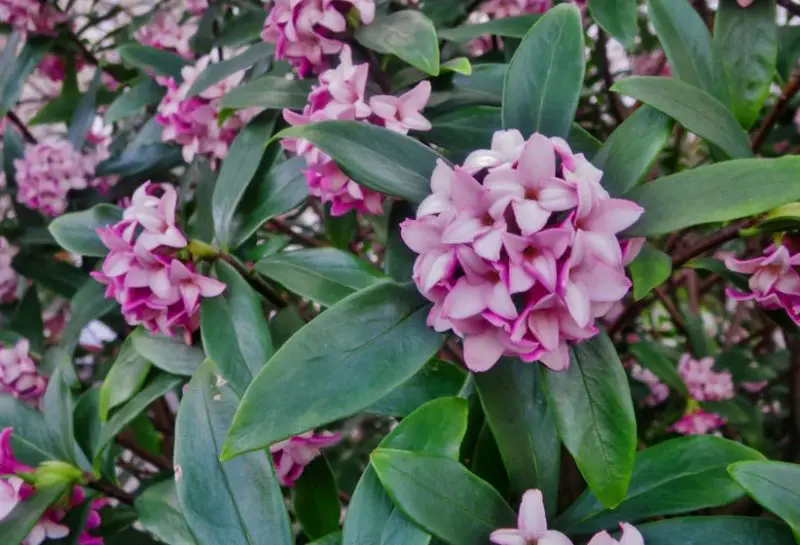
Comprising nearly 100 species of deciduous shrubs, the Daphne genus enchants with its potent fragrance. In late winter and early spring, clusters of daphne blossoms and berries adorn these hardy bushes, thriving in zones 7 through 9, enduring temperatures down to 10°F.
While toxic, daphnes offer practical utility; in Japan, two species are used for paper production. Winter Daphne, with its sweet, soapy, and subtly spicy scent, stands out as one of the most fragrant varieties.
Heliotrope
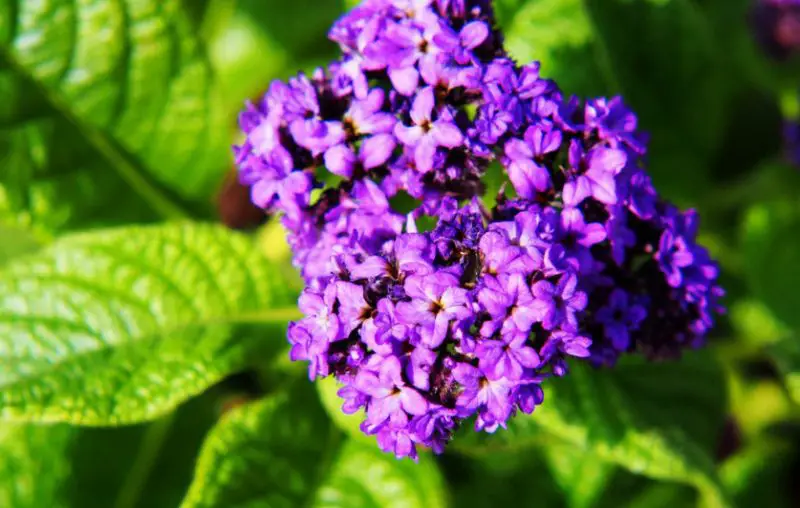
The Heliotropium genus, comprising around 325 flowering plants known as heliotropes, reflects their tendency to track the Sun. Nearly cosmopolitan, these plants thrive across the globe. Adorned with purple flower clusters, they entice butterflies to gardens, though caution is warranted around pets due to their toxicity if ingested.
Emitting a delicate, floral fragrance with hints of baby powder, vanilla, and marzipan, varieties like Azure Skies and Nagano add charm from summer to frost.
Primroses
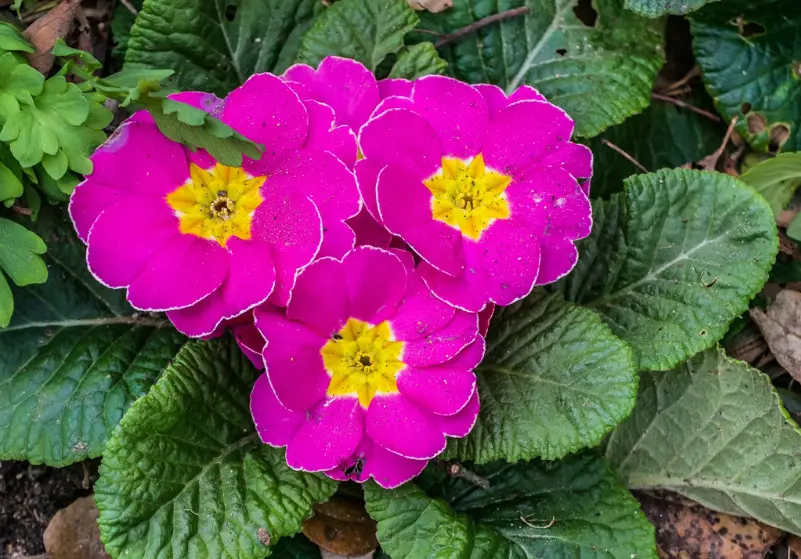
Primroses, scientifically known as Primula vulgaris, herald the arrival of spring with their vibrant blossoms. Originating from Europe, Asia, and Africa, these delicate flowers derive their name from the Latin “prima” and “rosa,” signifying the first rose. Their clusters of sweet-smelling blooms, ranging from orange to citrusy hues, emanate a delightful fragrance.
Among the diverse array of colors, the purple and amethyst varieties stand out, captivating all who behold them. Particularly fragrant types include the Japanese and Belarina double vulgaris primroses, enriching any garden with their scent.
Violet
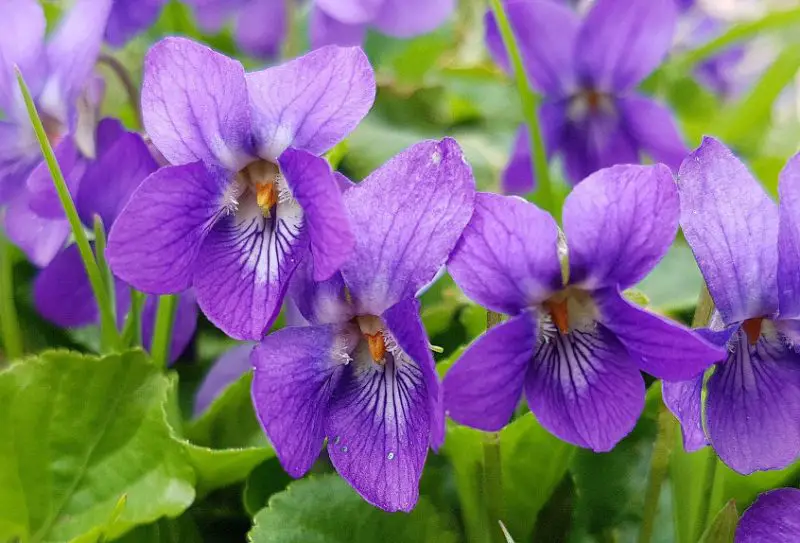
Violets, belonging to the Viola genus, enchant with their delicate beauty. With 500 to 600 species, they display heart-shaped leaves and charming flowers resembling tiny faces. Their petals span a spectrum of colors, but it’s the purple blooms that inspired the name “violet.
Flourishing in USDA hardiness zones 3 to 9, they thrive in various climates. Among their fragrant varieties, the sweet violet (Viola adorata) and parma violet (Viola alba) stand out with their soft, powdery scent, evoking spring’s essence.
Lavender

Lavender, belonging to the Lavandula genus within the mint family, boasts 47 distinct species. Renowned for its calming aroma, it’s a staple in aromatherapy, soothing both humans and pets alike. Its essential oil, often diffused for relaxation, derives from its Latin name “lavare,” meaning to wash, reflecting its historical use in cleansing rituals.
With lightly floral, herbal notes, lavender essence adds freshness to soaps and various products. Easy to propagate, it’s an ideal choice for expanding your garden or gifting to loved ones.
Hyacinths
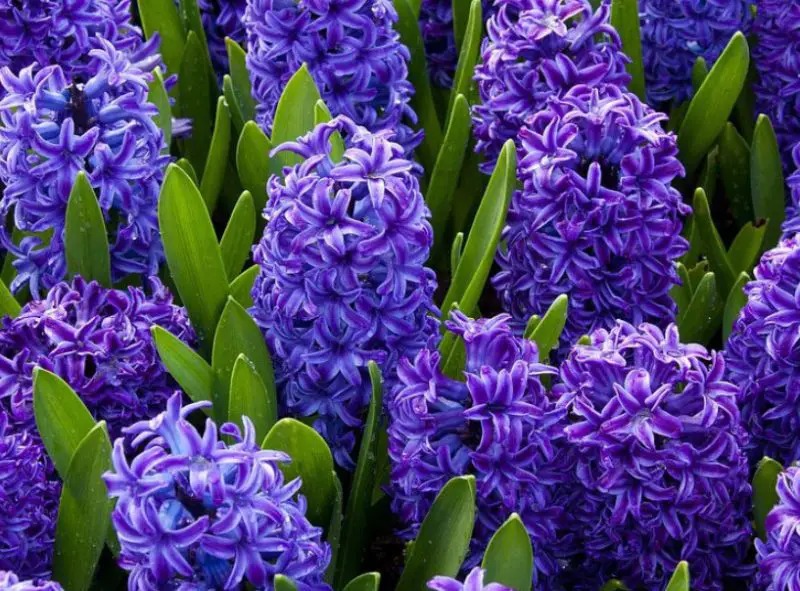
Originating from Northern Bulgaria to Northern Israel, hyacinths thrive in zones 4 through 8, enduring winter’s chill. As heralds of early spring, their sweet fragrance signals the season’s arrival. Adorned with racemes of star-shaped blossoms, they exude beauty in purple, white, and light pink hues.
Their scent, a potent blend of floral and watery notes with sweet, spicy undertones, delights the senses. Among the most fragrant types, the Dutch hyacinth (Hyacinthus orientalis) reigns supreme, captivating all who encounter it.
Dianthus

Dianthus, renowned for its vibrant, frilled petals, embodies boldness in the language of flowers. This genus encompasses around 300 species, known by common names like pink, carnation, and sweet william.
Originating primarily from Asia and Europe, with some species found in North America’s Arctic region and parts of Africa, dianthus blooms add splendor to gardens worldwide.
Their fragrance, characterized by strong, spicy notes reminiscent of cloves, infuses early spring and summer air, enchanting all who encounter them.
Scented Geranium
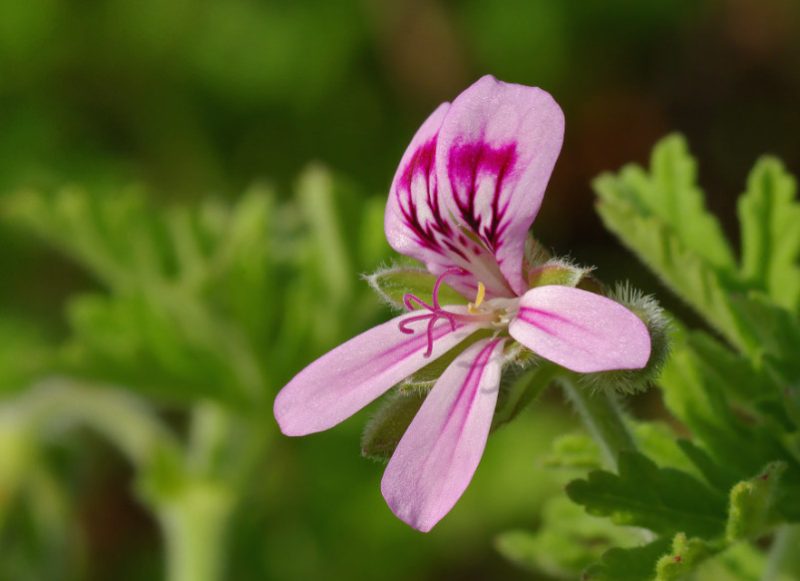
The Pelargonium genus encompasses nearly 300 species of flowering succulents, shrubs, and perennials, commonly known as storksbills, pelargoniums, and scented geraniums. Distinguished from the genus Geranium, they boast an array of fragrances ranging from sweet and spicy to floral and fruity.
Blooming primarily in spring and summer, they thrive in temperatures above 45°F to 50°F, with some varieties flowering year-round. Notable fragrant varieties include Pelargonium ‘Red Raspberry,’ ‘Lavender Lindy,’ quercifolium, and odoratissimum.
Datura
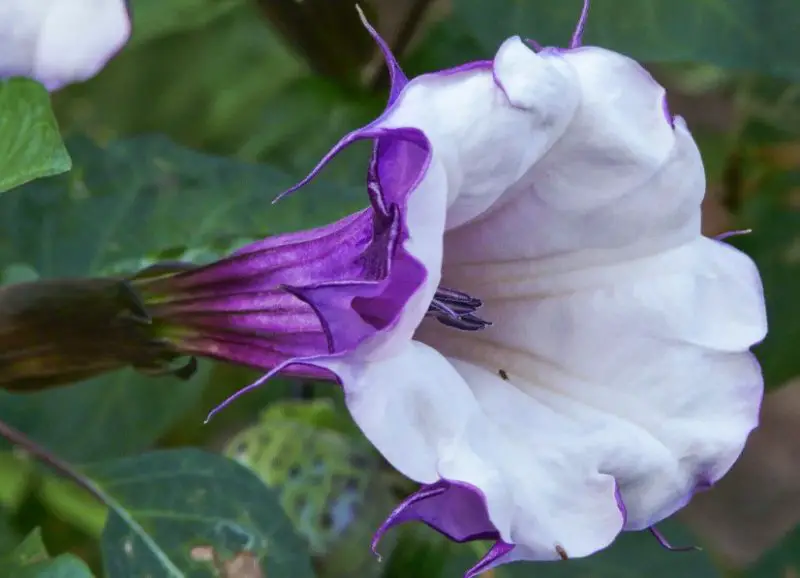
Datura metel, commonly known as devil’s trumpet, is a perennial shrub adorned with trumpet-shaped blossoms in white, yellow, purple, or a blend of these hues. Also dubbed angel’s trumpet, Indian thornapple, and Hindu datura, its flowers open at night, emitting a sweet fragrance akin to honeysuckle.
This nocturnal bloom aims to attract sphinx moths, its primary pollinator. With its peak season spanning early summer through fall, Datura ‘Evening Fragrance’ stands out as one of the most fragrant varieties.
Alyssum
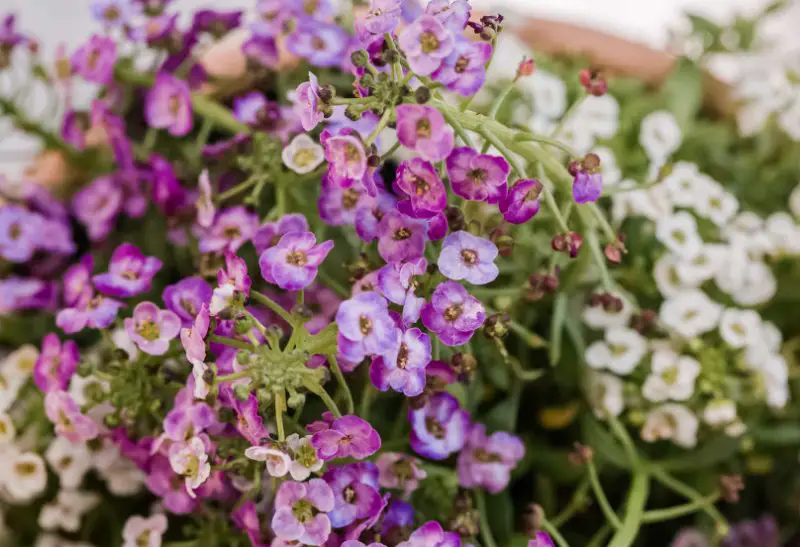
Alyssum, comprising 100 to 200 species, adorns gardens with clusters of petite flowers in various hues of white, yellow, pink, and purple. Their sweet fragrance, reminiscent of honey and melon, entices butterflies, bees, and other beneficial insects.
As ground cover, alyssum forms a colorful and fragrant carpet in gardens, especially during the summer and fall. Among the most fragrant varieties, Sweet Alyssum, such as Lobularia maritima ‘Snow Princess,’ stands out for its delightful scent.
Rhododendron
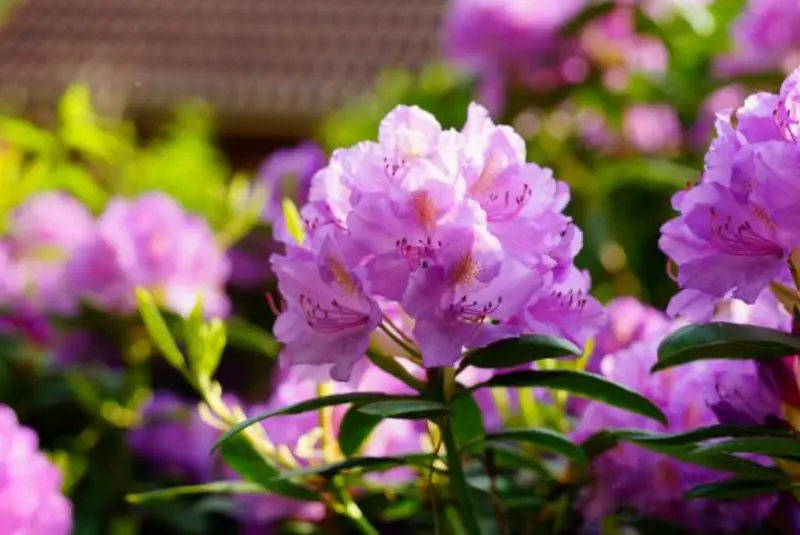
Rhododendron, comprising over a thousand species of woody shrubs, derives its name from ancient Greek, meaning “rose tree,” due to its flower’s resemblance to roses. These blossoms showcase a spectrum of colors, from deep purples to fiery reddish pinks, with numerous papery folds of petals.
Emitting a sweet, spicy fragrance with hints of clove, they peak in late spring to early summer. Notable fragrant varieties include Western azalea, ‘April Rose,’ and Roseshell Azalea.
Bearded Iris
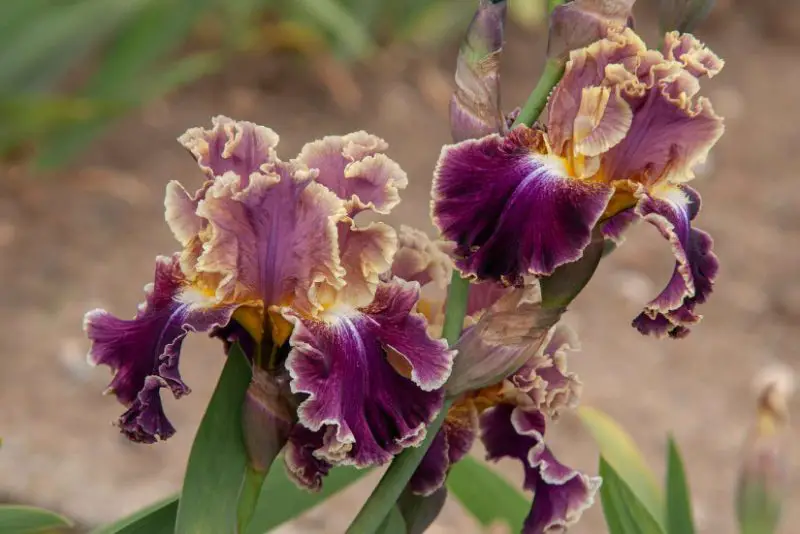
The Iris germanica, known as bearded iris, is a flowering plant in the Iris family. It’s a natural hybrid of Iris variegata and Iris pallida, boasting bright purple petals atop tall, vibrant-green stems.
With a fragrance characterized by deep, fruity, and spicy notes, these irises bloom majestically in late spring. Notable fragrant varieties include ‘Blue Suede Shoes,’ ‘Clarence,’ ‘Hemstitched,’ and ‘Cafe Bleu’ of Iris germanica.






